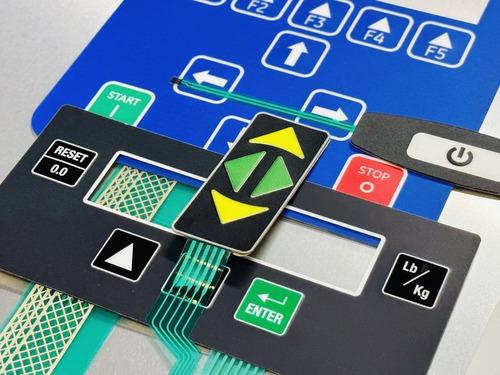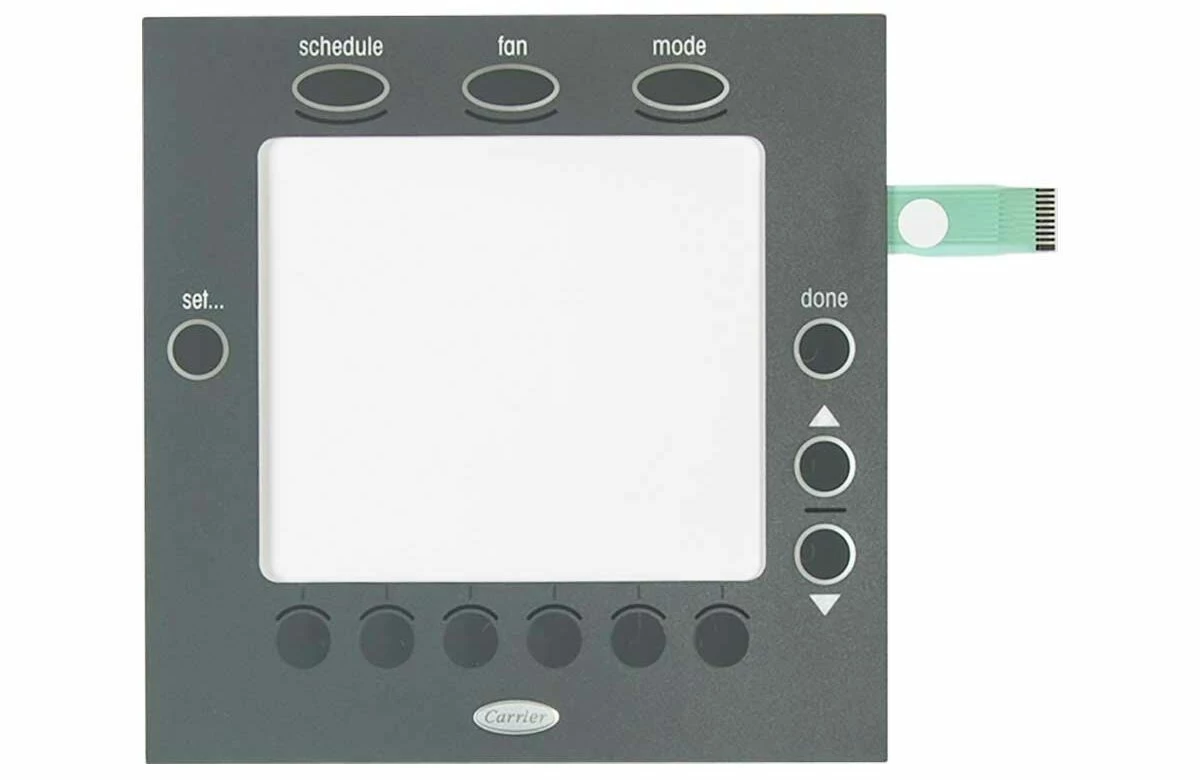Learn more about the Environmental Benefits of Using Membrane Switches in Electronics
Learn more about the Environmental Benefits of Using Membrane Switches in Electronics
Blog Article
Membrane Layer Switches Explained: A Comprehensive Overview to Their Advantages
Membrane layer switches stand for a versatile and advanced service for creating interface across a range of sectors. Their multilayered layout not only ensures functionality through straightforward stress however likewise provides considerable benefits, such as longevity and personalization. As sectors increasingly look for trustworthy and reliable control interfaces, recognizing the specific advantages and applications of membrane layer changes ends up being necessary. However, the ins and outs of their style and execution present unique challenges that quality better assessment. What elements should be taken into consideration to fully take advantage of their capacity in modern applications?
What Are Membrane Switches?

When pressure is put on the membrane layer switch, the layers make call, finishing an electrical circuit. This easy device enables a vast array of applications, from consumer electronics to industrial machinery. Membrane buttons are often created to be immune and water resistant to dust and impurities, making them ideal for environments where resilience is crucial.
Additionally, the versatility of the materials utilized in membrane switches over assists in cutting-edge styles that can comply with different shapes and measurements. This flexibility adds to their appeal in diverse areas, consisting of medical gadgets, vehicle controls, and home devices. Generally, membrane layer changes stand for a crucial component in contemporary interface modern technology, bridging the space in between users and digital systems.
Trick Advantages of Membrane Buttons
Amongst the myriad of interface options available, membrane switches over attract attention for their special mix of benefits. Among the key benefits is their small and lightweight design, which enables for integration into a variety of devices without adding substantial mass. This is specifically beneficial in applications where space is restricted.
Additionally, membrane layer changes deal toughness and resistance to environmental variables. They are generally created with materials that can stand up to dampness, dirt, and various chemicals, making them ideal for severe problems. This durability contributes to a much longer life-span compared to traditional mechanical buttons.
One more substantial advantage is the convenience in customization. Membrane switches can be published with various graphics, colors, and structures, enabling tailored styles that satisfy certain branding or practical demands. This versatility includes the number of layers and circuit alternatives, providing designers with multiple arrangements.
Moreover, the responsive comments supplied by some membrane changes boosts customer experience, making them more intuitive to operate. Last but not least, the ease of cleaning and upkeep further strengthens membrane layer switches as a sensible option in both customer and industrial applications. Membrane Switches. Generally, these essential benefits make them a favored option for several designers and producers
Applications in Numerous Industries
Just how do membrane switches find their area across varied markets? Their versatility and capability make them integral components in sectors ranging from health care to consumer electronic devices. In medical tools, membrane layer buttons are made use of for their convenience of cleaning and resistance to contamination, making certain health in settings where sterility is essential.
In the customer electronics market, these switches offer streamlined, easy to use interfaces that improve product looks while maintaining resilience versus deterioration. Automotive applications gain from membrane changes also, where they are made use of in dashboards and control board, using trusted efficiency in challenging problems.
In addition, industrial equipment utilizes membrane layer switches for control panels due to their robustness, capacity to hold up against harsh settings, and adjustable styles that deal with particular functional requirements. The food market leverages membrane layer switches for their simplicity of use and resistance to spills, guaranteeing operational performance in fast-paced settings.
Inevitably, the adaptability of membrane layer switches throughout these diverse applications emphasizes their necessary function in modern technology, improving individual communication while satisfying industry-specific needs. Their continued evolution promises more integration right into arising areas and ingenious products.
Layout and Modification Options
The layout and customization choices available for membrane buttons are essential for tailoring user interfaces to fulfill details individual demands and visual choices. These switches can be designed in numerous why not try here forms, sizes, and designs, permitting for seamless combination right into diverse applications. The adaptability in layout indicates that makers can create distinct interfaces that enhance functionality and preserve brand name identity.
Customized shades, structures, and graphics can be applied to the surface area of the membrane button, giving an opportunity for branding and customer involvement. Additionally, backlighting options, such as LED lighting, can be integrated to improve presence in low-light problems, thus enhancing performance.
Useful elements can additionally be tailored, consisting of tactile comments and actuation pressure, which can be adapted to suit different individual interactions. The choice of materials, such as polyester or polycarbonate, permits variations in toughness and environmental resistance, providing to the specific needs of different industries.
Inevitably, the substantial design and personalization capacities of membrane layer buttons make it possible for companies to produce visually enticing and user-friendly interfaces, making certain that their items satisfy both useful and aesthetic requirements efficiently. Membrane Switches.
Factors To Consider for Execution
Carrying out membrane layer switches over calls for cautious factor to consider of various variables to ensure optimal functionality and user experience. Aspects such as exposure to moisture, extreme temperatures, and chemical substances can considerably affect the switch's performance and longevity.

An additional essential element is the switch's design and layout. Making sure that the tactile comments and actuation force line up with user assumptions improves use. Performing user screening can offer beneficial insights into the optimal layout.
Additionally, compatibility with electronic components need to be examined. The button's wiring must straighten with the overall system architecture, ensuring reliable signal transmission and reducing disturbance.
In addition, manufacturing methods and costs must be examined. The selection between customized styles and common models can influence both budget and lead time.
Lastly, take into consideration repair and maintenance. Membrane buttons may call for details cleaning and treatment procedures to maintain their appearance and functionality gradually. By attending to these considerations, organizations can carry out membrane layer buttons that satisfy their operational demands while supplying a favorable individual experience.

Final Thought
To conclude, membrane switches over stand for a durable and versatile control user interface appropriate for a large range of applications across numerous sectors. Their compact layout, resistance to ecological factors, and personalized attributes improve individual experience while conference details branding demands. As modern technology continues to progress, the additional info significance of membrane switches in modern-day tools remains substantial, providing both capability and aesthetic allure. Future developments will likely further broaden their applications and efficiency in different environments.
Membrane switches over stand for a sophisticated and functional service for creating user interfaces across a variety of markets.Recognizing the useful reference basic components of modern electronic user interfaces, membrane layer buttons are a kind of user interface tool that consist of versatile, slim layers of material. In general, membrane switches represent a critical element in contemporary individual interface modern technology, connecting the space between customers and digital systems.
Among the myriad of user interface alternatives available, membrane layer switches over stand out for their distinct combination of advantages.The design and customization options available for membrane buttons are crucial for tailoring user interfaces to fulfill specific user requirements and visual preferences.
Report this page